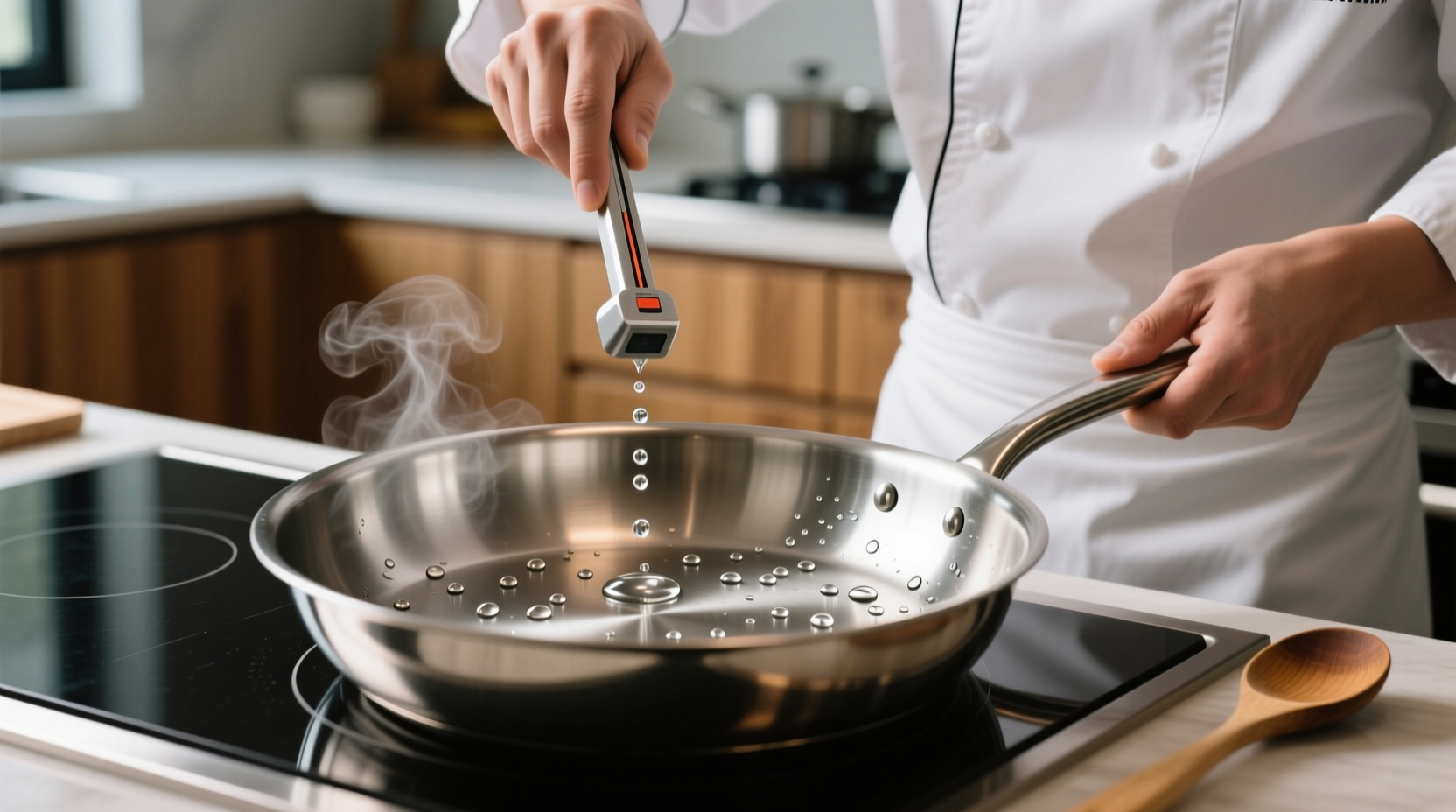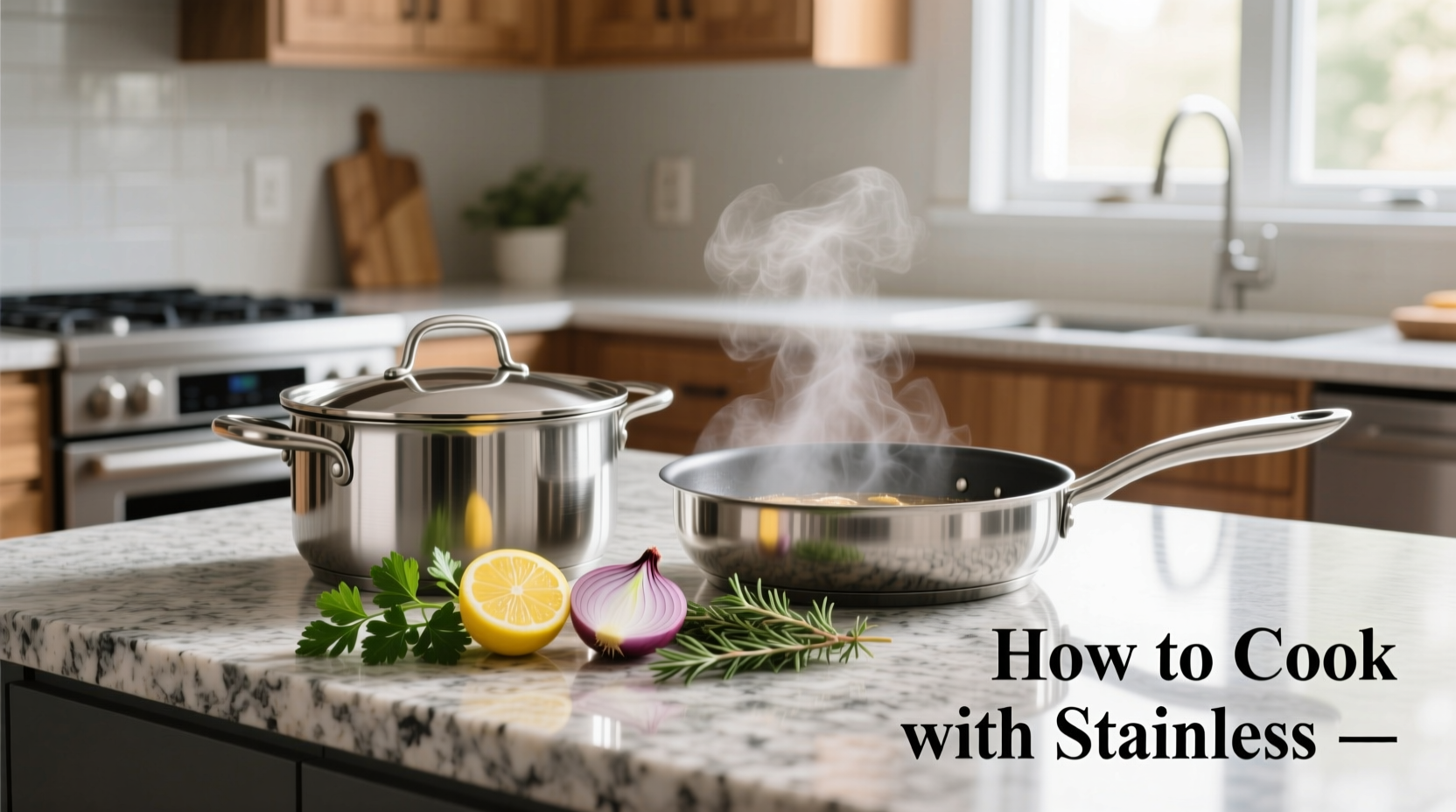Stop struggling with food sticking to your stainless steel pans. The secret is proper preheating and the water test method: heat your pan until water droplets dance across the surface before adding oil. This creates the non-stick surface stainless steel is known for when used correctly.
Why Stainless Steel Deserves a Place in Your Kitchen
Stainless steel cookware remains a professional chef's secret weapon for good reason. Unlike non-stick surfaces that degrade over time, high-quality stainless steel develops better performance with proper use. According to the Culinary Institute of America, stainless steel provides superior heat distribution for searing meats and creating restaurant-quality pan sauces. But mastering stainless requires understanding its unique properties—something most home cooks never learn.
The Stainless Steel Timeline: From Industrial Material to Kitchen Essential
Stainless steel wasn't always a kitchen staple. Understanding its evolution explains why modern stainless cookware performs so well:
| Time Period | Development | Impact on Home Cooking |
|---|---|---|
| Early 1900s | Harry Brearley invents stainless steel | Industrial applications only |
| 1930s | First commercial kitchen equipment | Professional kitchens adopt for durability |
| 1960s | Multilayer construction developed | Better heat conduction reaches home markets |
| Today | Advanced cladding technology | Home cookware rivals professional performance |
The Critical Preheating Mistake 90% of Home Cooks Make
"Most home cooks ruin their stainless steel experience before they even add oil," explains Antonio Rodriguez, chef and cooking technique specialist. "They either don't preheat enough or they preheat too much. The sweet spot is medium heat for 3-5 minutes depending on your stove."
Here's the professional method:
- Place empty pan on burner set to medium heat
- Wait 3-5 minutes (longer for electric stoves)
- Perform the water test: flick droplets into the pan
- If water beads up and dances, temperature is perfect
- If water evaporates instantly, pan is too hot
- If water sizzles and spreads, pan needs more heating

Oil Application Techniques That Prevent Sticking
Once your pan passes the water test, proper oil application makes all the difference. Contrary to popular belief, you don't need excessive oil with stainless steel when using the correct technique:
- The thin layer method: Add 1-2 teaspoons of high-smoke point oil (avocado, grapeseed) and swirl to coat
- The oil temperature test: Oil should shimmer but not smoke—this indicates 350-375°F, the ideal range
- For proteins: Pat food completely dry before adding to the pan
- The critical waiting period: Allow food to sit undisturbed for 2-3 minutes to develop the fond
When Stainless Steel Isn't the Right Choice
While versatile, stainless steel has limitations. Understanding these context boundaries prevents frustration:
- Avoid for delicate fish: Non-stick or carbon steel works better for fragile proteins
- Not ideal for low-heat simmering: Aluminum or enameled cast iron provides more even gentle heat
- Acidic foods: Extended cooking of tomatoes or wine can impart metallic taste
- Best applications: Searing meats, making pan sauces, sautéing vegetables
Mastering the Deglaze: Transforming Stuck Bits into Flavor Gold
What many call "sticking" is actually the fond—the caramelized bits that create restaurant-quality sauces. Professional chefs consider this a feature, not a bug:
- After removing cooked food, reduce heat to medium
- Add ¼ cup liquid (wine, stock, vinegar)
- Use a wooden spatula to scrape the browned bits
- Simmer until liquid reduces by half
- Finish with cold butter for emulsified sauce
This technique, documented in the USDA's Food Safety and Inspection Service guidelines, not only creates incredible flavor but also helps clean the pan simultaneously.
Stainless Steel vs. Other Cookware: Performance Comparison
| Feature | Stainless Steel | Non-Stick | Cast Iron |
|---|---|---|---|
| Heat Distribution | Excellent (with aluminum core) | Poor | Uneven |
| Searing Capability | Superior | Poor | Good |
| Sauce Making | Excellent (fond development) | Poor | Good |
| Durability | Extremely high | Low (scratches) | High (but chips) |
| Maintenance | Moderate | Easy | High |
Proper Cleaning and Maintenance for Longevity
Stainless steel's longevity depends on proper care. Follow these steps after cooking:
- Allow pan to cool slightly but clean while still warm
- Use hot water and mild detergent with non-abrasive sponge
- For stubborn residue, simmer 1 cup water with 2 tablespoons vinegar
- Dry immediately to prevent water spots
- Never use steel wool or harsh abrasives
- Store with protective liner between pans
According to materials research from the American Society for Metals, proper maintenance prevents pitting corrosion that can develop from salt exposure during cooking.
Troubleshooting Common Stainless Steel Problems
Problem: Food sticks despite following instructions
Solution: Check your heat level—too low prevents the Leidenfrost effect that creates the non-stick surface. Increase heat slightly and repeat the water test.
Problem: Discoloration or rainbow patterns
Solution: This indicates overheating. Clean with a paste of baking soda and water, then polish with vinegar. Prevent by avoiding empty preheating beyond medium heat.
Problem: Food burns in spots
Solution: Your burner may be uneven. Rotate the pan occasionally during preheating, or consider a heat diffuser for electric stoves.











 浙公网安备
33010002000092号
浙公网安备
33010002000092号 浙B2-20120091-4
浙B2-20120091-4